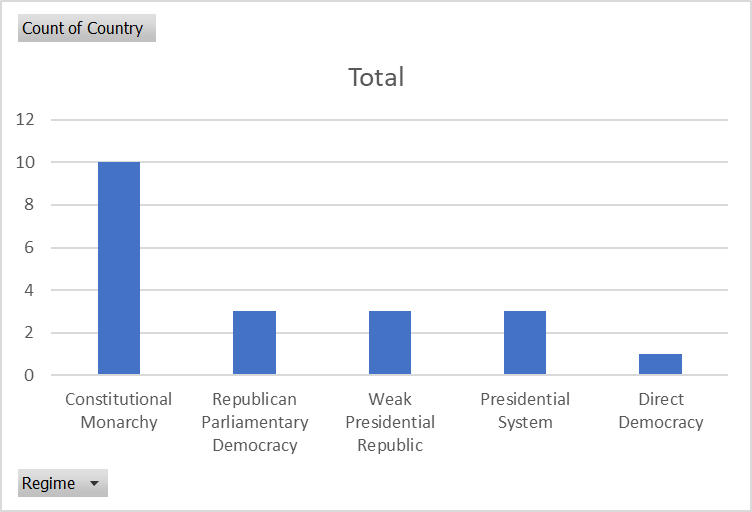The Economist Democracy Index classifies only 20 countries as “Full Democracies”. (This includes the UK, which I question if it’s a full democracy.) Of these the majority are Parliamentary systems with constitutional monarchs. Here’s a chart showing the frequency of regime type by class; I have made the classes myself. I tried to have three, Parliamentary, Presidential Republic and Republican Parliamentary Democracy. The latter being republics with Presidents indirectly elected and mainly concerned with Govt. formation.
In the Constitutional Monarchies and the Republican Parliamentary Democracy systems, the Assembly (or lower house) appoint and hold the Govt. to account.
In the Presidential Systems, the President’s appoint the Cabinet and act as Head of Govt. & Head of State. These consist of Costa Rica and Uruguay. (I currently class Austria as a Presidential System as the President can dismiss the Govt., however the Pres. is Head of State, not Head of Govt. and the latter would seem to require the consent of the Assembly).
The weak presidential systems the President is directly elected but there is a Prime Minister accountable to the Assembly.
The Parliamentary Democracies are as far as I can tell, indirectly elected presidents with Prime Ministerial Govt. accountable to their Assemblies, this includes Germany.
Direct Democracy is Switzerland, which of course is different! They have no President, no King, a collective head of state & a government elected by the Assembly.
The democracies of the world don’t use Presidential systems.

Pingback:Dictatorship and Plebiscites |
Pingback:On Presidentialism |
Pingback:Dictatorship and Plebiscites – davelevy . info / wiki